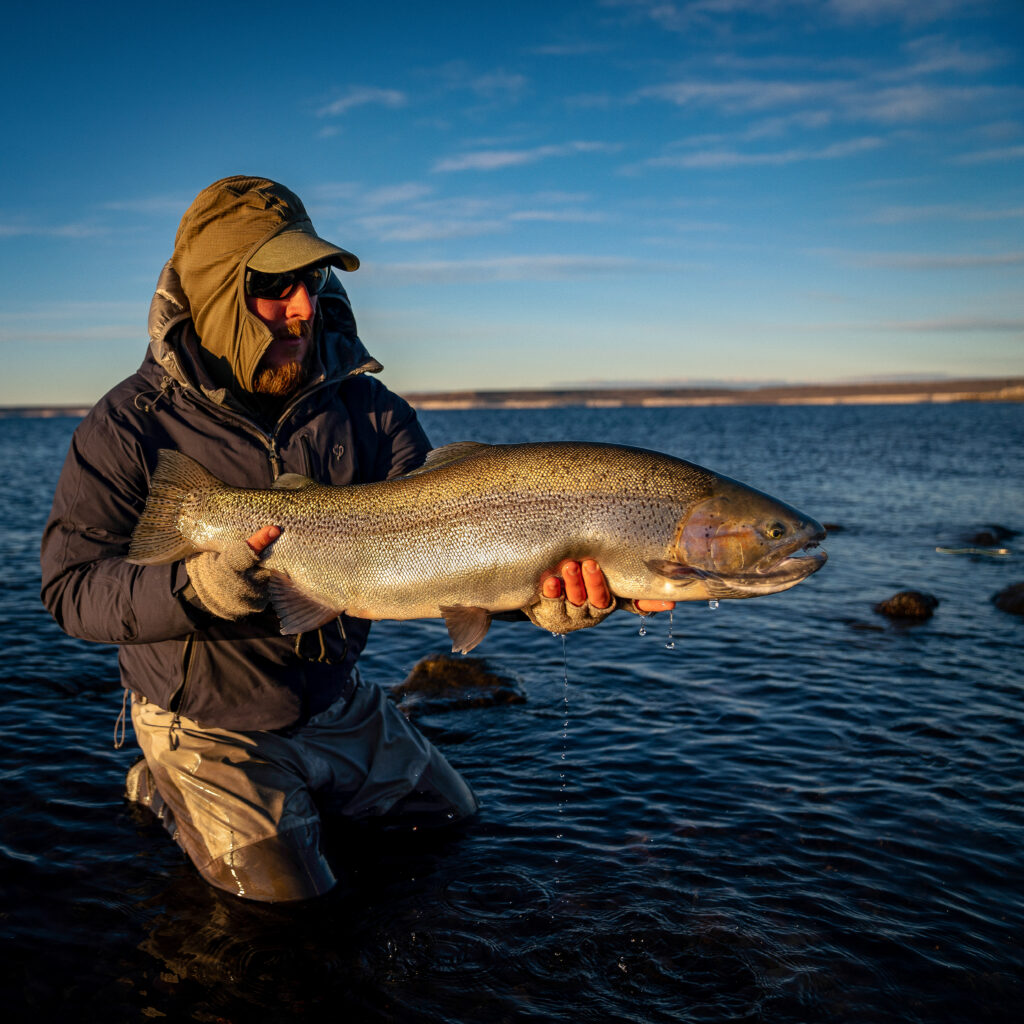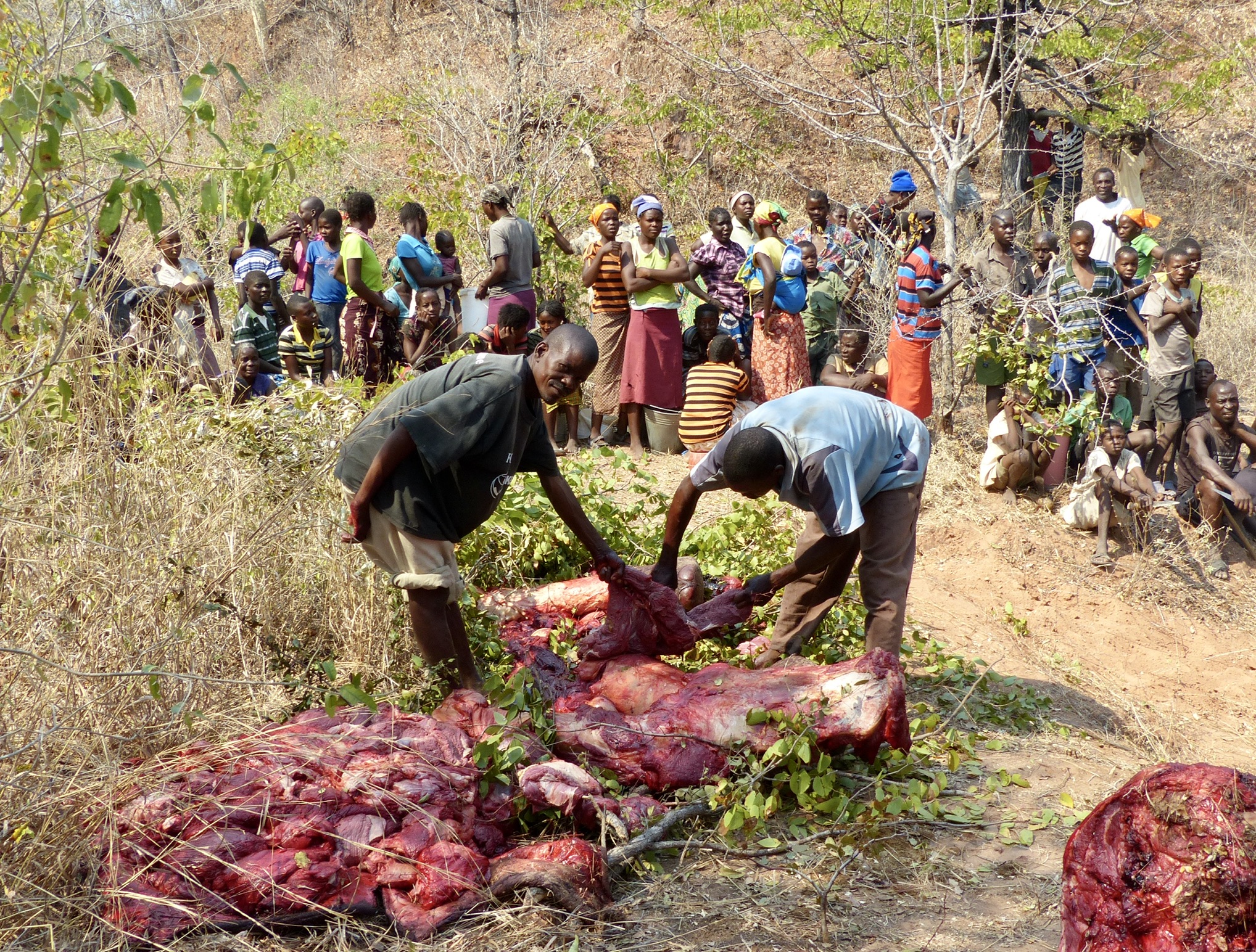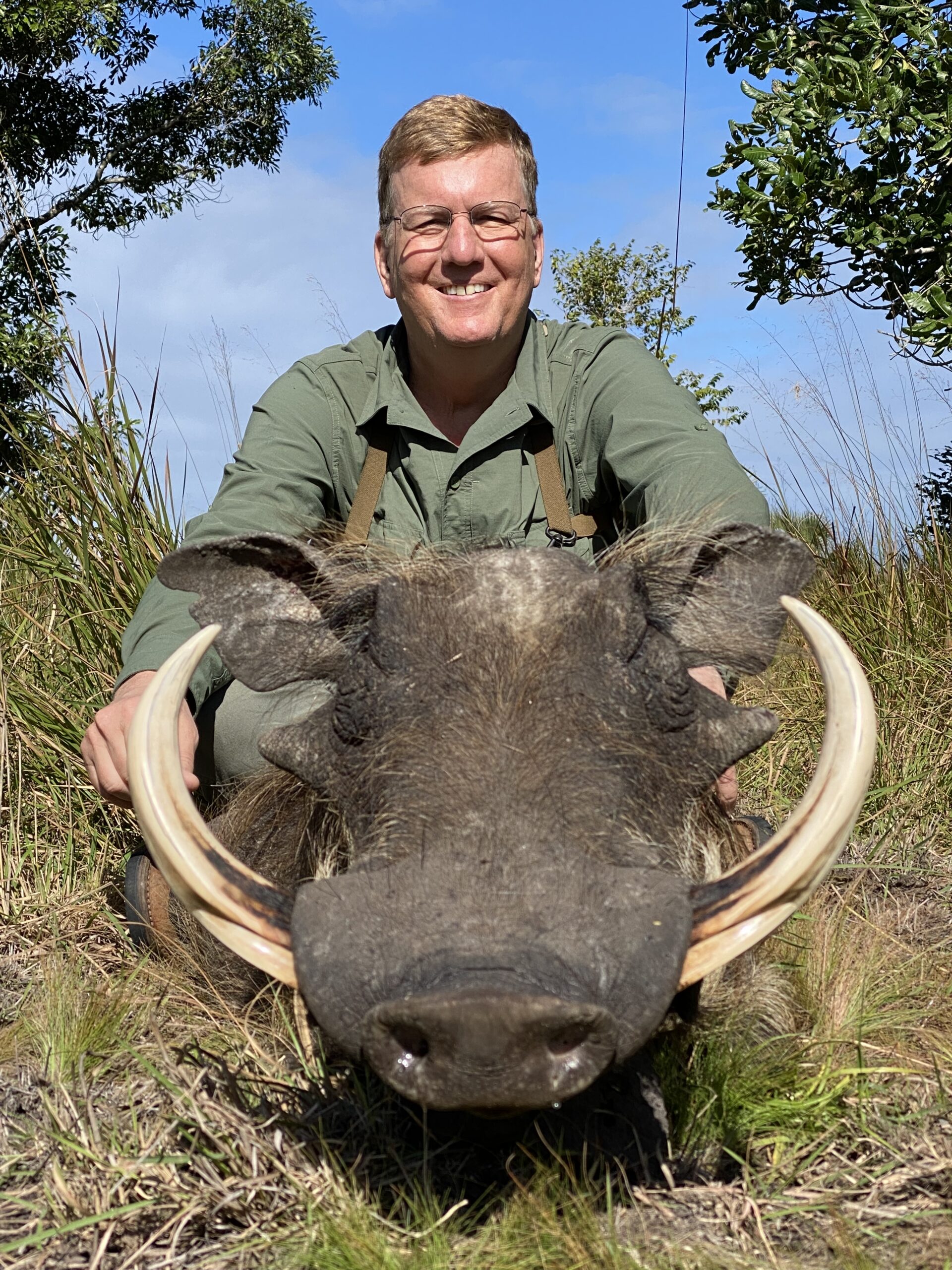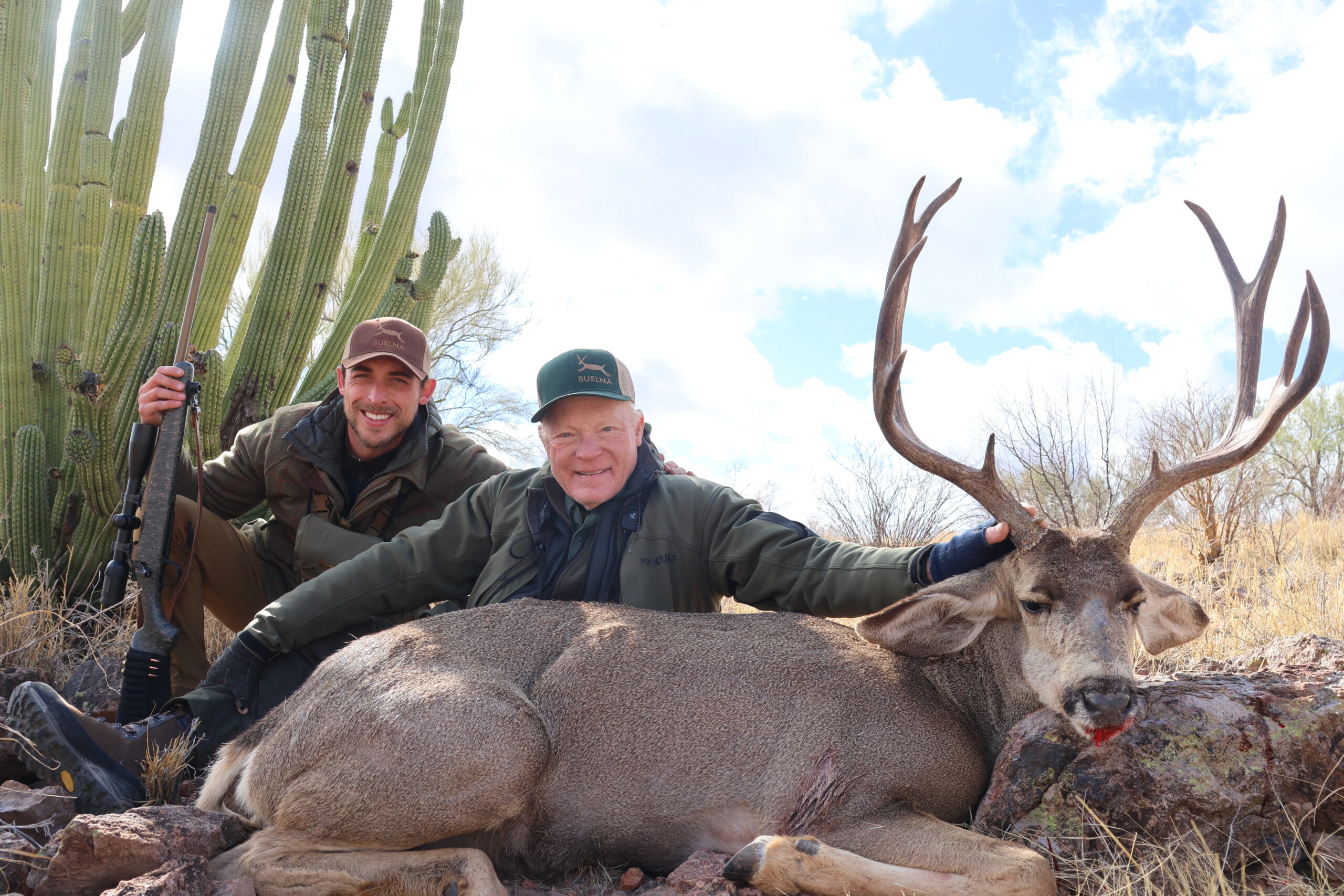The Best Rainbow Trout Fishing in the World
By Ryan Sparks, Associate Editor
This article was originally published in the July/August edition of Safari Magazine.
Waves crashed against the rocks at my feet, sending sprays of water above my head. I was wading off a rocky finger that extended into the lake, trying to stay balanced in the pounding wind and waves.
I shot a backhand cast over the roiling turquoise water and stripped in line until I felt the fly. Seconds later, a surge of energy pulsed through the line as an enormous rainbow trout leapt from the water 30 feet out. It ran parallel to the shore, jumping several times and pulling my line dangerously close to the rocks. As the foamy swells boomed against the point, I braced myself between two large boulders and tightened the drag.
A few minutes later I had the fish at my feet and used an incoming wave to corral it in a small pool along the shore. Like the distant sunset, its brilliant crimson flanks faded to polished silver. I admired it for a moment before letting it slip through my fingers. I watched as it vanished back into the chaos of the lake.
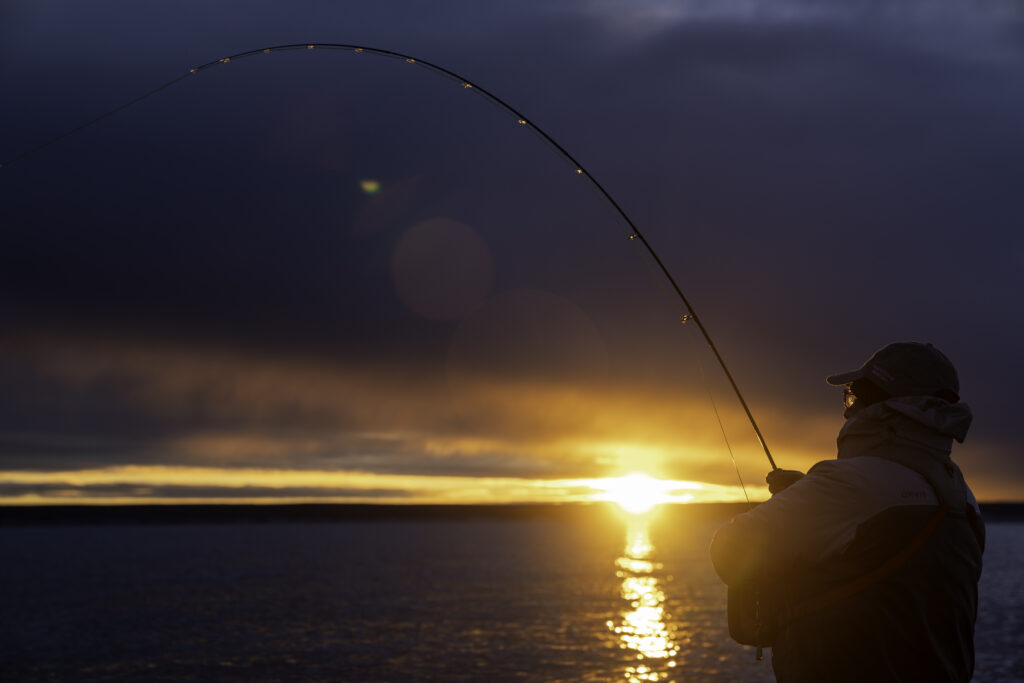
“Like the distant sunset, its brilliant crimson flanks faded to polished silver. I admired it for a moment before letting it slip through my fingers. I watched as it vanished back into the chaos of the lake.”
I had known about Lago Strobel — nicknamed Jurassic Lake — since I was a 22-year-old trout bum attending graduate school in Montana. For well over two decades, it has held the reputation of being the best rainbow trout fishery in the world in terms of both size and quantity of fish.
At the invitation of Justin Witt of Hemispheres Unlimited, I had the opportunity to experience this incredible place firsthand. Witt, an American expat living in Argentina, offers access to exclusive fisheries at greatly reduced prices through his “bum programs.”
These unique offerings focus heavily on fishing and less on glitz and glamour. On this trip, we would be fishing in May, early winter in southern Argentina, with freezing morning temperatures and occasional flurries of snow. It also happens to be the time of year when the lake’s largest fish move towards the river mouth within a fly cast of shore.
“Just bring a bunch of warm clothes and expect it to be cold,” Witt had told me before the trip. “When you hook into the biggest rainbow of your life, you’ll forget about the cold.”
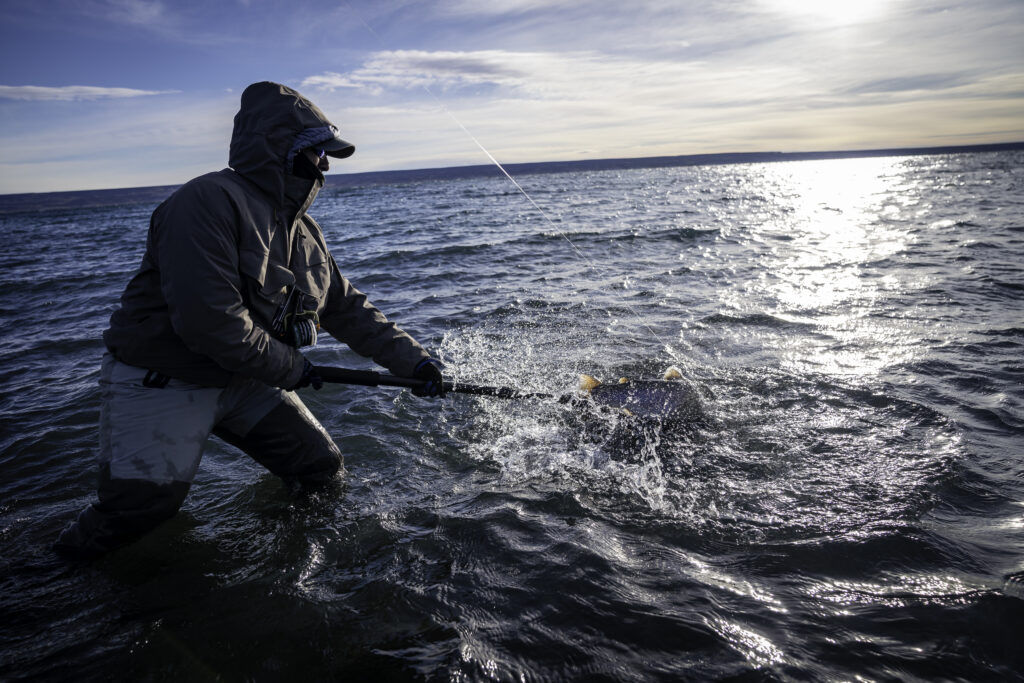
FROM RUMOR TO REALITY
Jurassic Lake Lodge sits in the sparse, arid rangelands of southern Argentine Patagonia, just east of the looming Andes mountains and around 350 miles north of Tierra del Fuego. To reach it, our group of anglers landed in Calafate, a small town in southwest Santa Cruz Province, and loaded into 4×4 trucks for the more than five-hour drive to the lodge. We passed enormous herds of guanaco (a camelid native to South America closely related to domesticated llamas) and small groups of rhea (a large flightless bird similar to an ostrich) as the paved road turned to gravel and eventually faded to dirt.
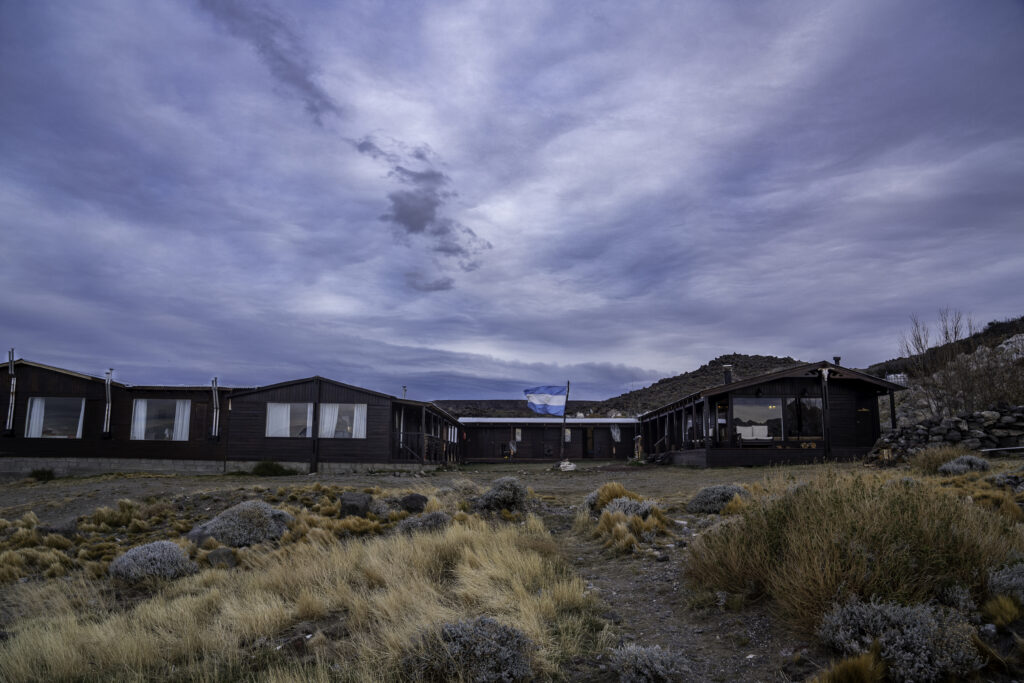
Along the way, we stopped at a small roadside general store for empanadas and cervezas. A plaque on the wall noted the spot as where Butch Cassidy and the Sundance Kid had holed-up while on the run from the law. They couldn’t have picked a better hiding place.
Arriving at the lodge later that evening, South African lodge manager Lou Claven poured glasses of malbec around the woodstove. Looking out the large windows facing the lake there wasn’t a manmade source of light in view and the stars shone brightly in the sky.
Jurassic Lake Lodge was renovated in 2015 and now offers 10 comfortable rooms with private bathrooms, wi-fi and excellent cuisine for its guests. But things weren’t always this way. The story of how this world-renowned fishery came to be is a wild one. In fact, it’s an accident there are fish in the lake at all.
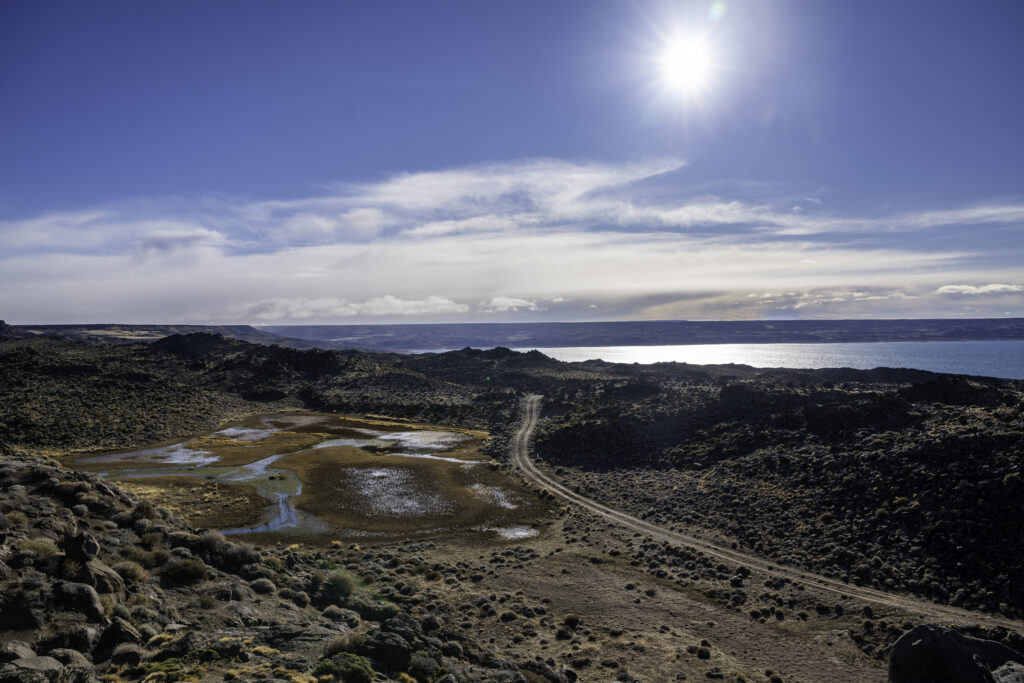
In 1994, estancia owner Alberto Rodriguez thought he could supplement his ranch’s income by farming rainbow trout in Lago Strobel. He soon imported McCloud River rainbow trout eggs and released them into the lake along with steelhead from the Santa Cruz River. To say the trout took well to the lake would be a giant understatement.
Lago Strobel is a deep 16,000-acre lake that formed on the Patagonian Steppe during the last ice age. Its wind-swept waters just happen to be the ideal environment to grow enormous trout. With no native fish to compete with, an absence of predators, an endless supply of food in the form of tiny underwater crustaceans, and ideal spawning habitat, the rainbows reproduced and grew quickly.
However, due to Strobel’s remote location and lack of accessible shoreline, Rodriguez was unable to find a way to get his fish to market, and the plan to profitably harvest the trout was abandoned. While Rodriguez couldn’t capitalize on the fish from an economic perspective, he and his family were consistently catching world-class rainbows of record proportions.
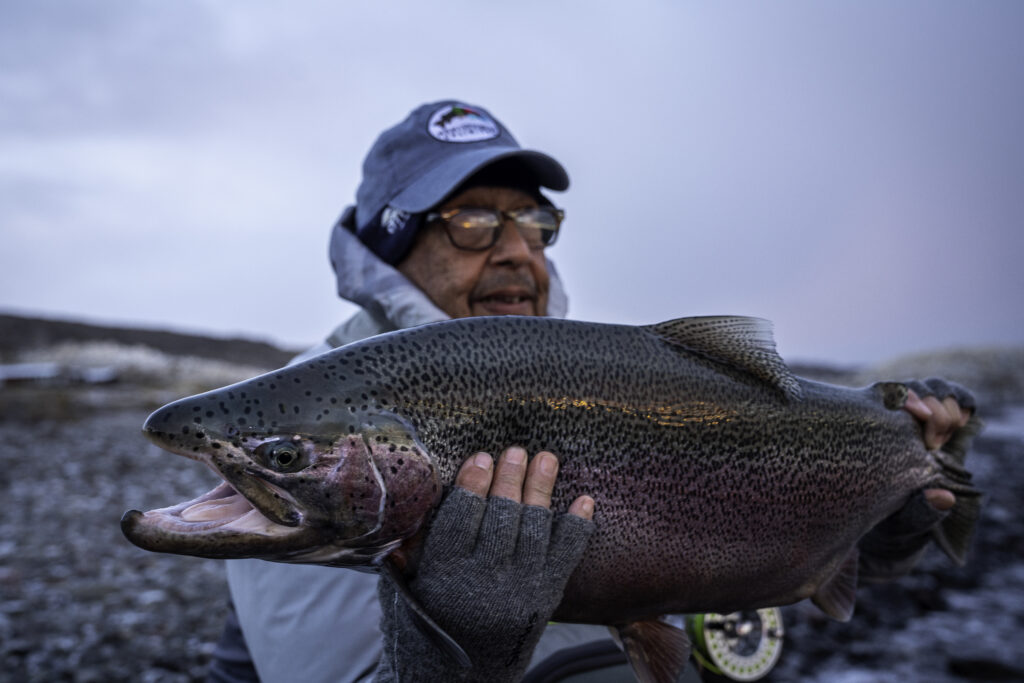
The reason Strobel’s rainbows grow so large is two-fold. First, Strobel’s cool, oxygenated water produces legions of small underwater shrimp called scuds. Rainbows in Strobel don’t so much “feed” as constantly snack. Some estimates suggest rainbows here can grow as much as 2 pounds in a single month.
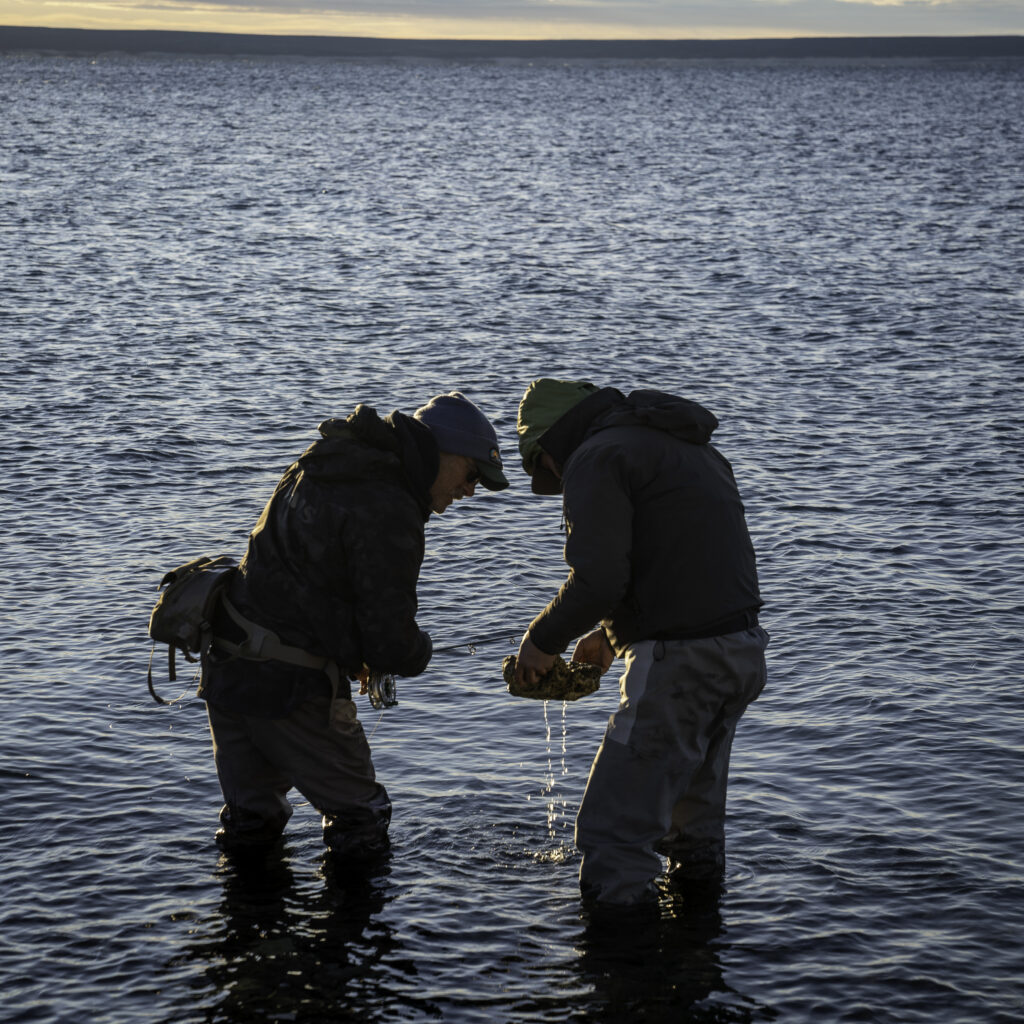
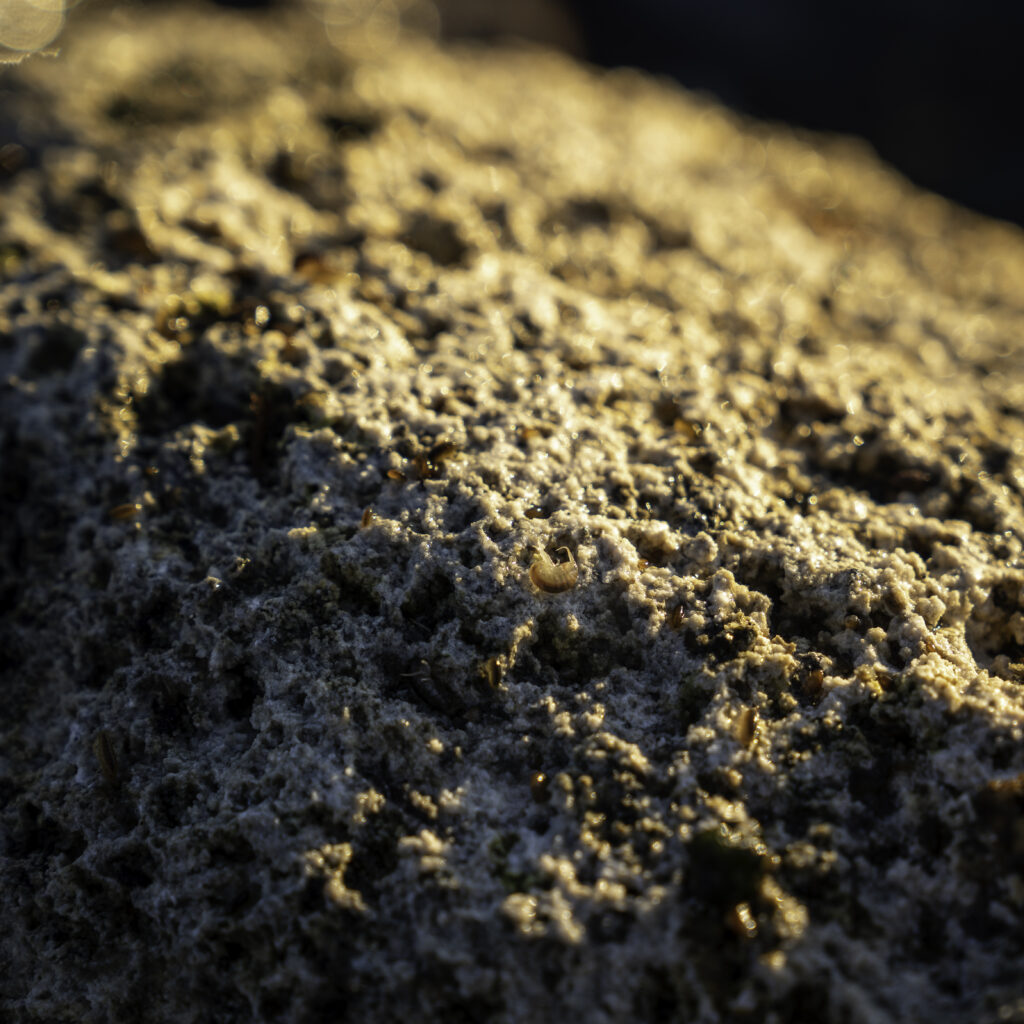
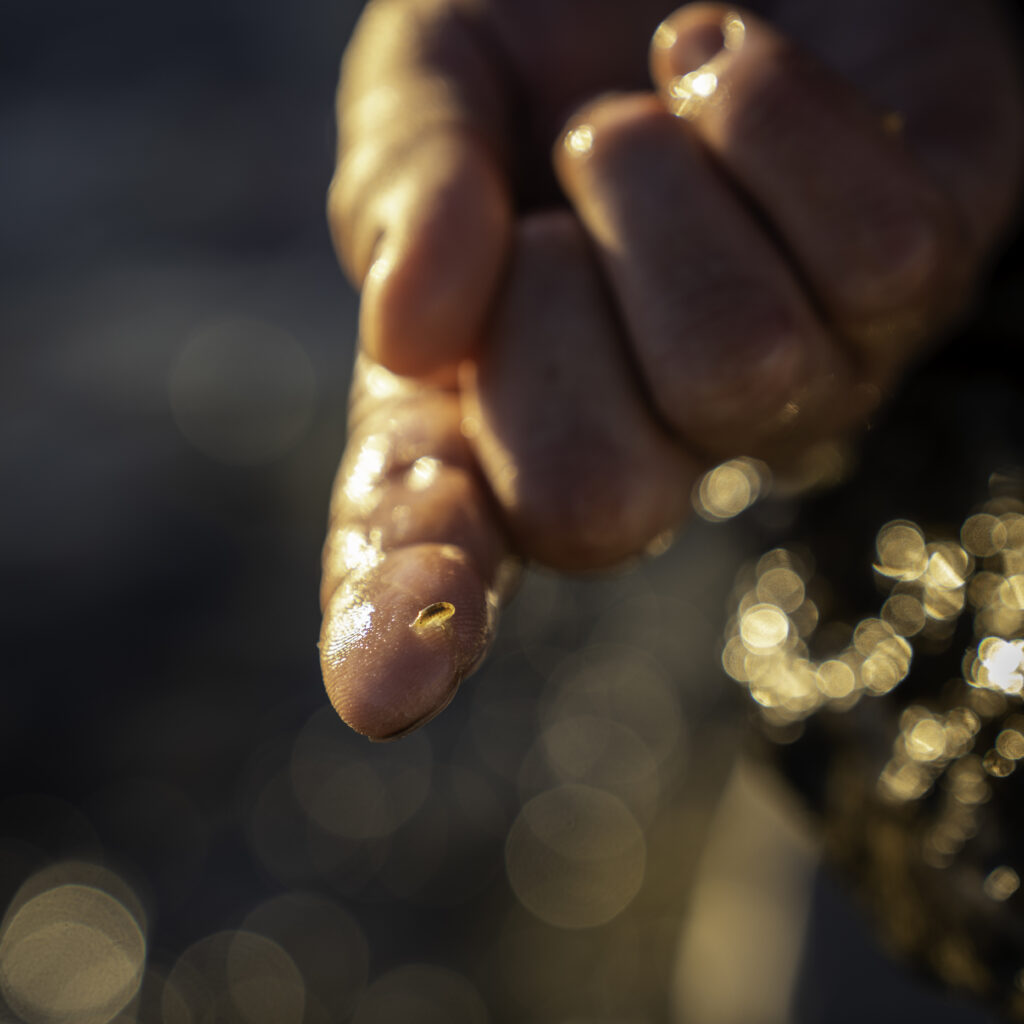
Second, Strobel has no outflow and only one small tributary, the Barrancoso River. Limited spawning habitat means only a portion of the lake’s rainbows can reproduce, which keeps the lake from becoming overpopulated and stunting fish size. Yet, there is still enough quality spawning habitat where populations remain stable and healthy.
In the early 2000s, rumors of Strobel’s colossal rainbows slowly spread through the fly-fishing community. When Klaus Frimor and Christer Sjöberg saw photos of the fish, they began planning the first outside expedition to the lake.
What followed was a 13-hour overland trip to an area with more cougars than people. Frimor and Sjöberg slept in tents and endured biblical wind and weather while exploring the lake but were rewarded with the largest rainbow trout of their life.
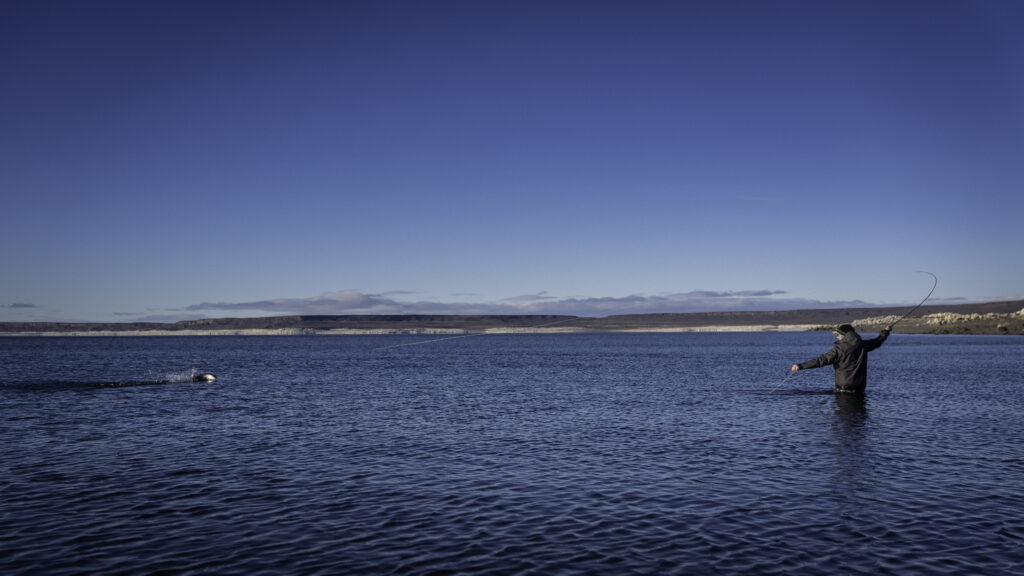
Returning from their journey, the two anglers knew they had to start a fishing operation on the lake, and wanting to keep Strobel’s location a secret, they gave it a nickname — Jurassic Lake. That nickname stuck and these days it is more common to hear Strobel referred to as Jurassic than by its real name.
Frimor and Sjöberg soon made a deal with the estancia owner to set up a basecamp at the junction of the Rio Barrancoso and Lago Strobel. In those days, anglers slept in tents with no electricity or running water, and the gale-force winds the area is known for made everything difficult. Still, they had a steady stream of clients who were gladly willing to rough it in exchange for the incredible fishing.
Fast forward two decades and Jurassic Lake Lodge is now a comfortable off-grid fishing outpost complete with a whisky library, wine cellar and excellent food. The logistics of maintaining a lodge in such a remote area are daunting, but as we were about to find out, there is a very good reason for the lodge’s location.
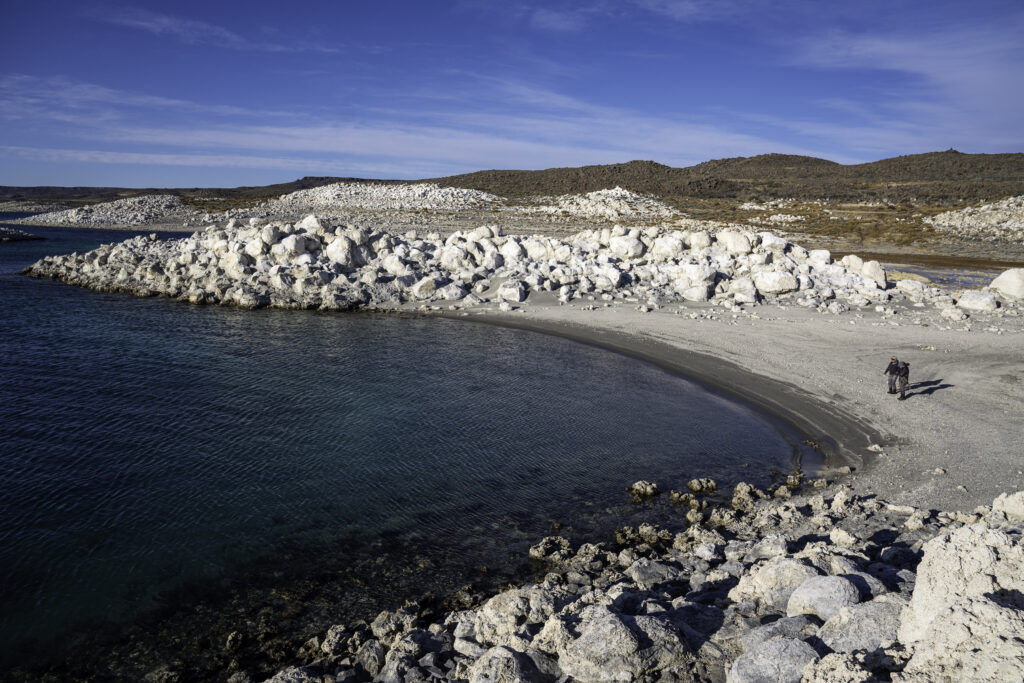
TROUT IN THE BREAKERS
“On my first cast, I caught the biggest rainbow trout of my life. On my second and fourth casts, I repeated the feat.”
The next morning our group of anglers was up early, anxious for our first casts of the trip. Dressing for the day took nearly 15 minutes. I layered on a pair of thin base-layer socks, heavy wool over-socks, a light pair of thermal underwear, fleece bibs, down pants, two thermal shirts, a down coat, rain jacket, fingerless wool gloves, mittens, a wool buff, cloth ball cap, wool stocking hat, waders, and finally, wading boots.
Stepping outside, the wind shrieked like a kettle left to boil. Strobel is known for wind, and any story written about the lake is obliged to mention it. Wind speeds have been known to reach over 70 mph, creating ocean-like surf conditions in the freshwater lake. The wind is a constant presence here — a part of life.
Sand and bits of gravel pelted my side as the already formidable wind gusted to greater strength. I laughed as I passed a sign hanging on the leeward side of the lodge that read, “Make Friends with the Wind.” There wasn’t another option.
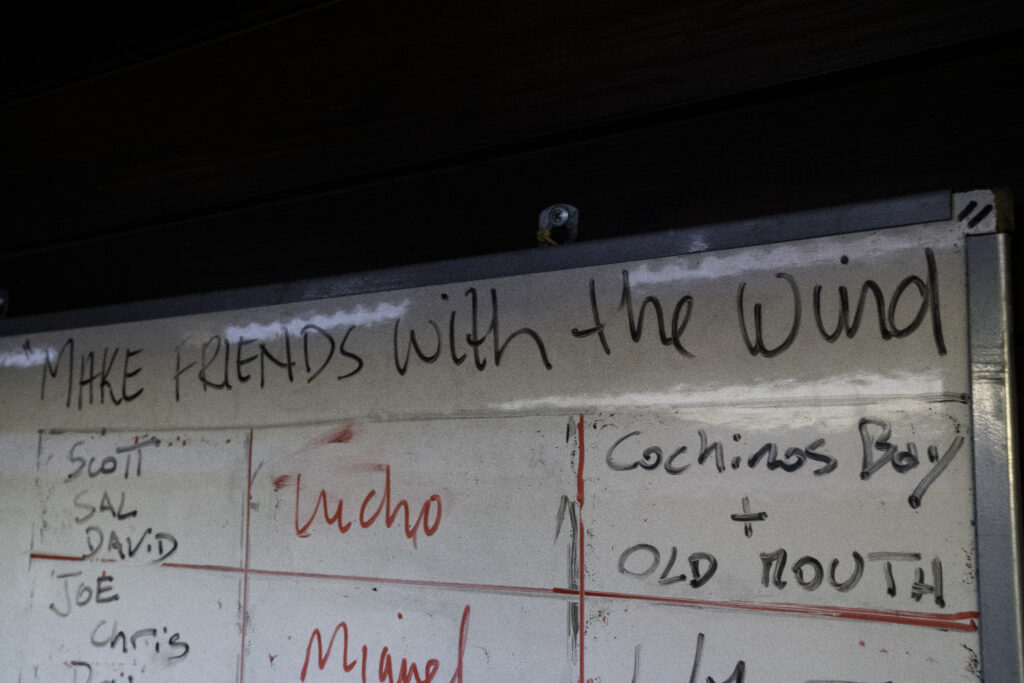
We strung up our rods, shuffled down to the water’s edge and took our respective places along the shoreline, wading a short distance into the lake around 50 feet apart. I tied on one of the small black leech flies that Witt had recommended I tie before the trip. He also offered an important bit of advice — tie it on a heavier shanked hook than usual.
“These fish are huge,” he said. “They will bend and break regular hooks.”
On my first cast, I caught the biggest rainbow trout of my life. On my second and fourth casts, I repeated the feat. And I wasn’t the only one blown away by the insane fishing. All along the shoreline anglers howled with laughter and excitement.
Over the course of the morning, an older fisherman beside me yelled, “This is a big one!” anytime he hooked a fish, which was dozens of times. And he was right. They were all big.
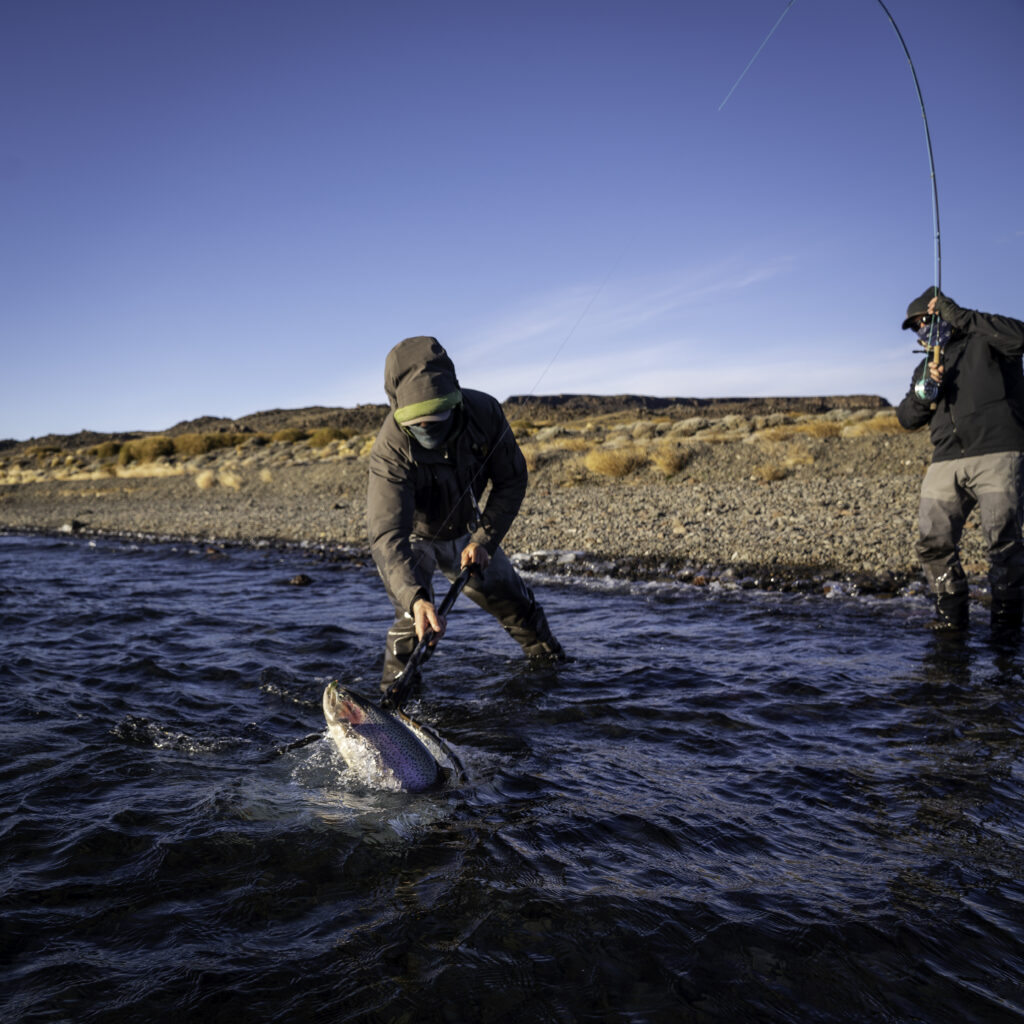
Describing the trout at Strobel requires varying degrees of synonyms for the word big — huge, enormous, gargantuan, gigantic, colossal, immense and so on. A 10-pound fish is average and rainbows of 20 pounds are caught every week.
The guides at Jurassic Lake Lodge see a lot of big fish in a season, but I knew it must be a monster when guide Luciano Arata yelled for the other guides to come see a fish someone had hooked.
I followed behind and watched as Sal Bruno, a fly fisherman from Delaware, caught the largest fish of the trip — a 34-inch-long trout with the girth of a watermelon.
Back at the lodge for lunch, the cold and wind never came up in conversation.
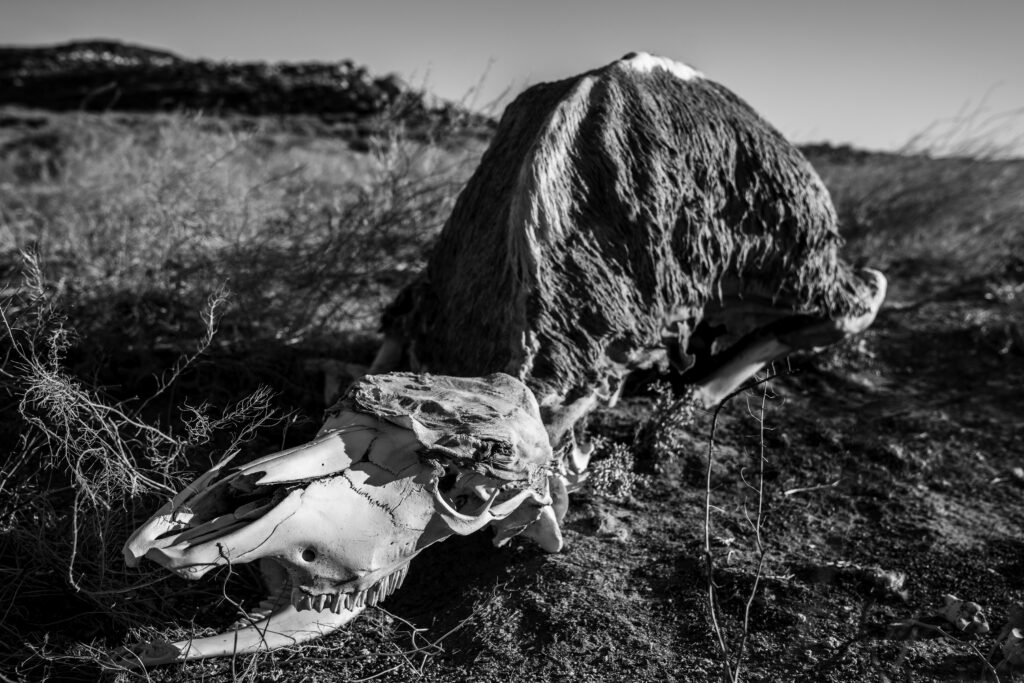
A LAND OF BONES AND ROCKS
“The prevalence of bones, bleached white by the sun, gave the land a rugged character that seemed tailor-made for a Cormac McCarthy novel.”
Later that afternoon, Witt asked if I would like to check out the petroglyphs a short ride from camp. On the ride, he explained that early native people had used the nearby cliffs to get out of the wind and scan the horizon for game. They also knapped arrowheads in the shelter of the cliffs. As Witt parked the truck, he mentioned it’s important to park facing into the wind to prevent the doors from getting ripped off when opened.
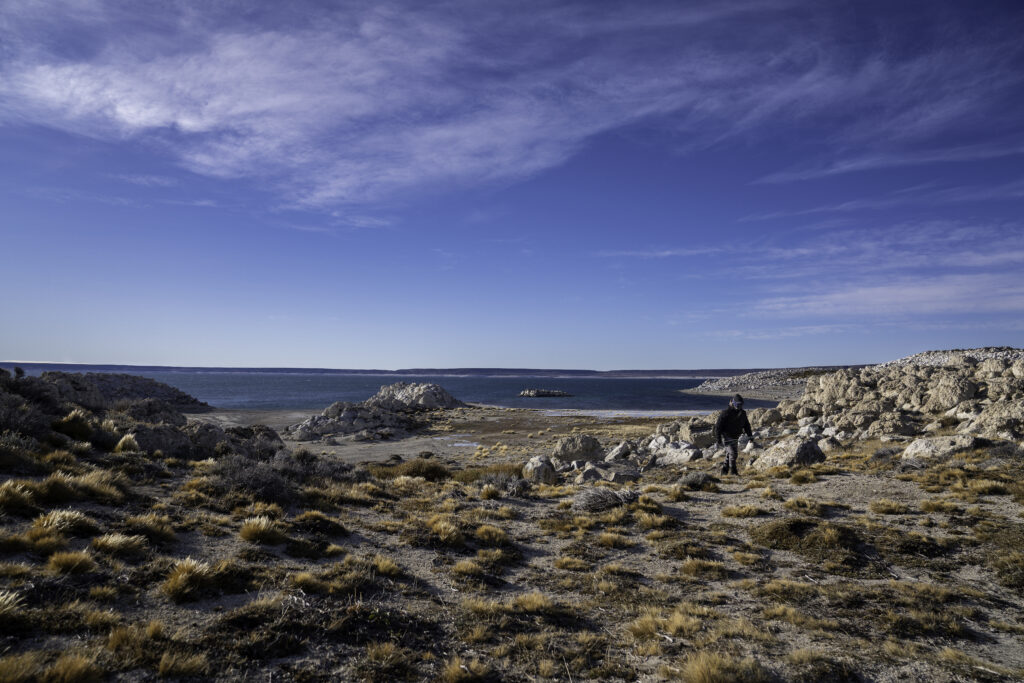
A short hike down a narrow chute brought us to the bottom of a rock ledge where petroglyphs depicting guanaco and puma tracks were etched into the rock. All around our feet, knapping chips were strewn on the ground. Witt told me the black obsidian shavings were from Pampa del Asador, nearly 200 miles away. Even back then hunters went out of their way to get the best tools for the job.
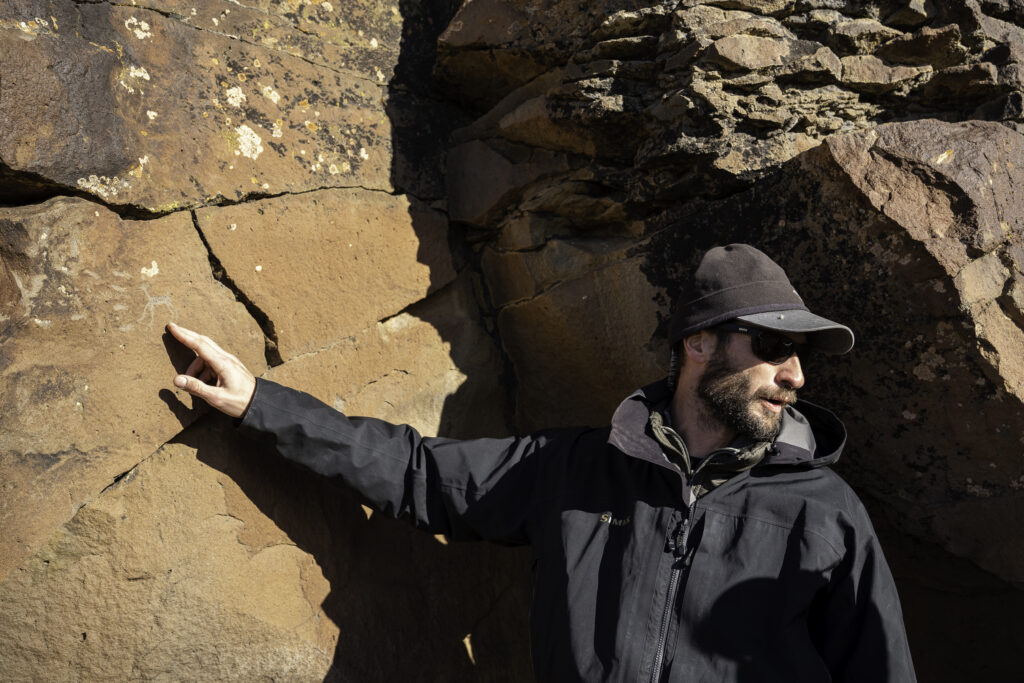
I imagined early Holocene-era hunters sitting on the rocks around us, knapping arrowheads, spearpoints and knives while scratching depictions of their hunts on the cliff edge nearly 9,000 years ago. Looking out at the landscape, the Patagonian Steppe felt ancient.
The prevalence of bones, bleached white by the sun, gave the land a rugged character that seemed tailor-made for a Cormac McCarthy novel. Other writers have compared the rugged topography to Mars. It seemed like an unlikely place to catch giant rainbow trout.
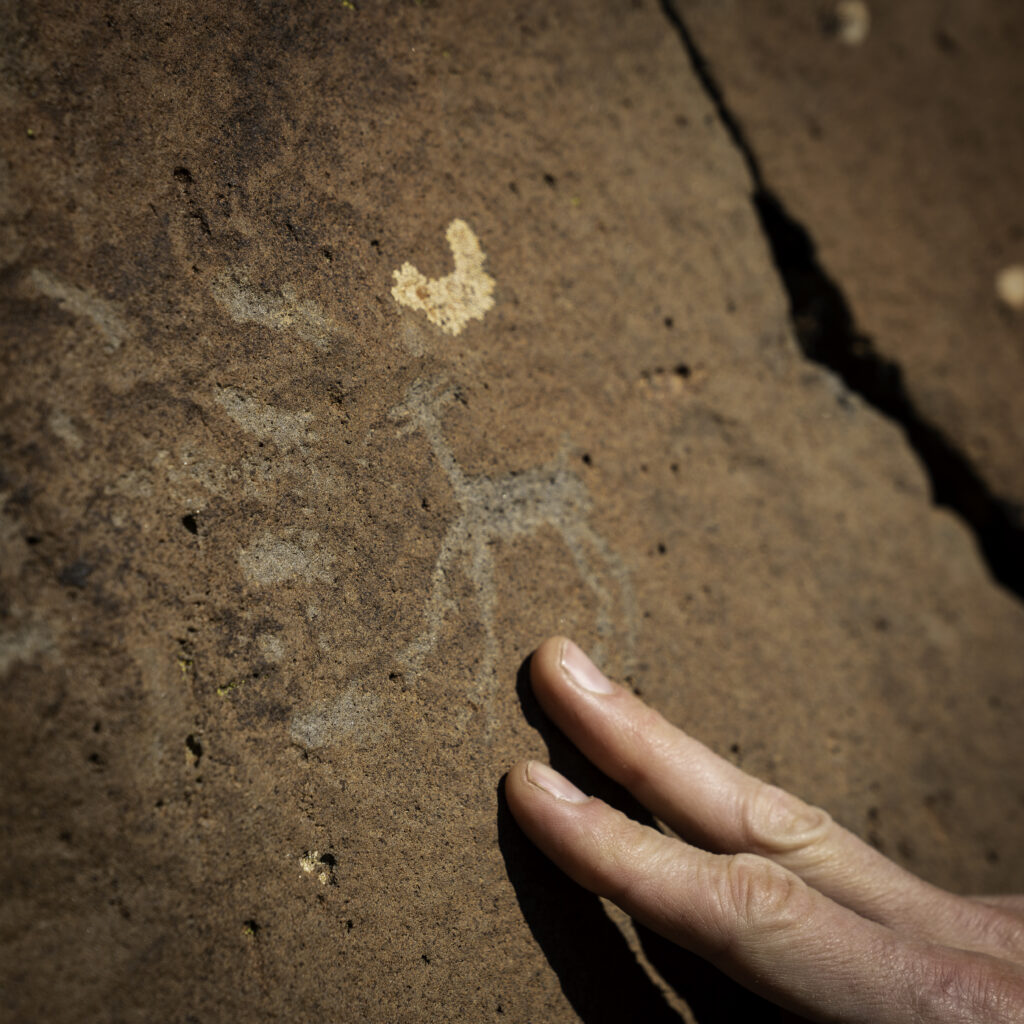
Back at the lodge, I looked down towards the lake. The other anglers had waded into position, casting into the waves while the guides watched from behind. One by one their rods arched, and fish sprang from the water. The guides moved up and down the beach, netting fish, removing hooks, taking photos and releasing fish. The process continued until it was time for dinner.
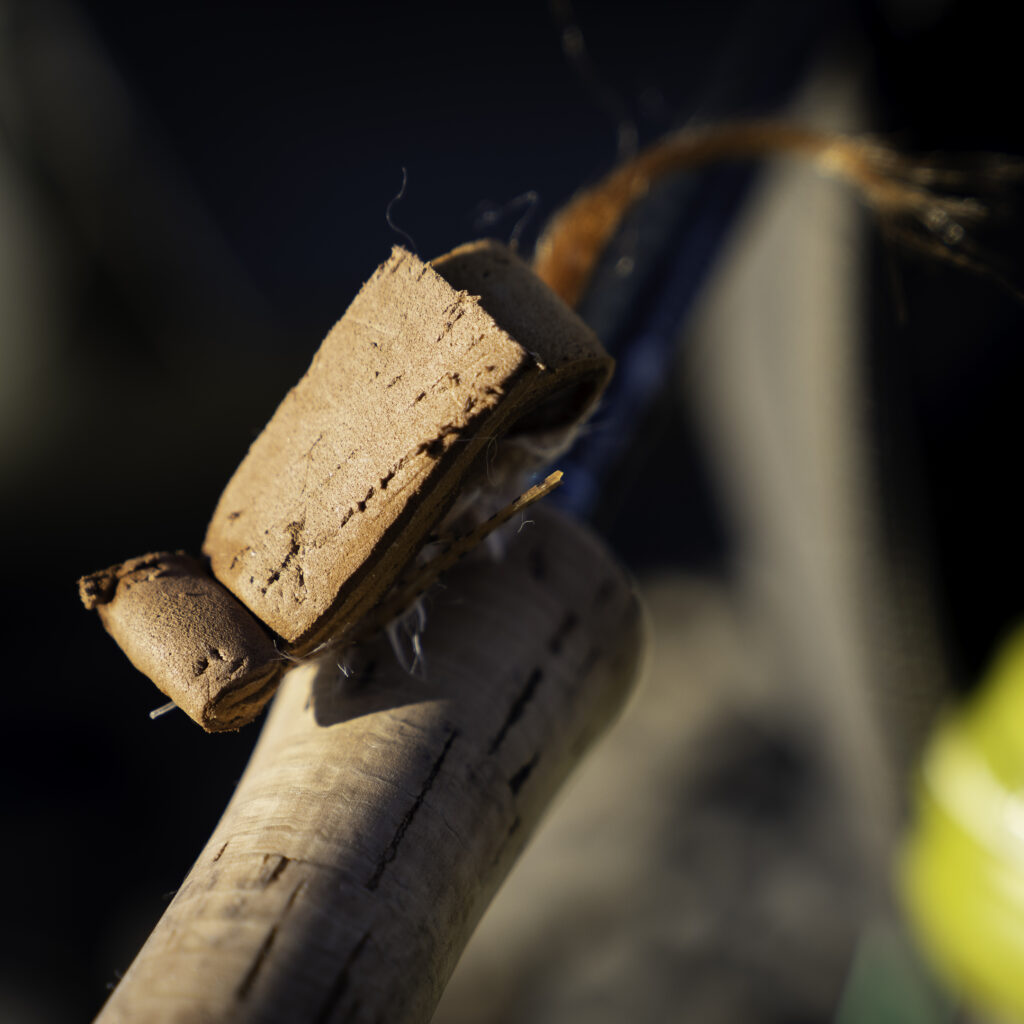
MICE IN THE DARK
“They fought hard and I did my best to land them quickly, pausing to bust ice from my rod guides before casting the mouse back into the water for another death swim.”
The next morning, I got up before the rest of the group, switched on my headlamp and pulled on my frozen waders in the predawn darkness. Walking towards the lake the air was still, and I switched off my headlamp and listened to the water lap against the shore. Then, remembering the cougar petroglyphs, I switched it back on and scanned the area around me.
Standing at the edge of the water near the mouth of the river, I could hear trout splashing in the shallows as they milled near the shelf where the river dropped into the lake. The evening before, Witt had given me a mouse fly and said to give it a try in the morning. I tied it to a stiff section of tippet, pulled around 30 feet of fly line off the reel, and made a short cast into a stripe of moonlight reflected on the surface of the lake.
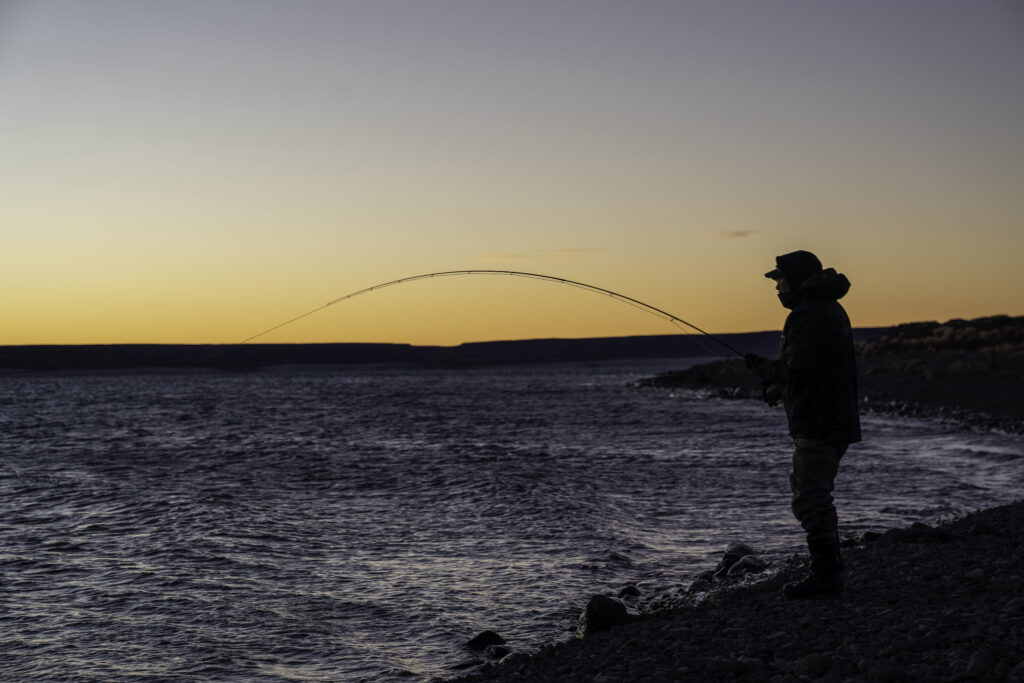
I could barely make out the silhouette of the fur-and-foam mouse gurgling on the surface and soon lost sight of it completely. Then I heard a “SPLOOSH” that sounded like someone had tossed a bowling ball in the water. The black surface of the water exploded as the hooked fish dashed for deeper water.
I fought it for several minutes before pulling the hook from its mouth in the shallows, doing my best not to touch the water and freeze my hands. Over the course of the next hour, more than a dozen fish attacked my mouse imitation. They fought hard and I did my best to land them quickly, pausing to bust ice from my rod guides before casting the mouse back into the water for another death swim. One fish began following the fly 50 feet from the shore, creating a wake behind the mouse and striking at it twice before engulfing the fly when it was only a rod’s length away.
When the other anglers walked down from breakfast, they asked how the morning had been. I smiled and showed them my foam mouse, punctured with dozens of tooth marks and missing half its tail.
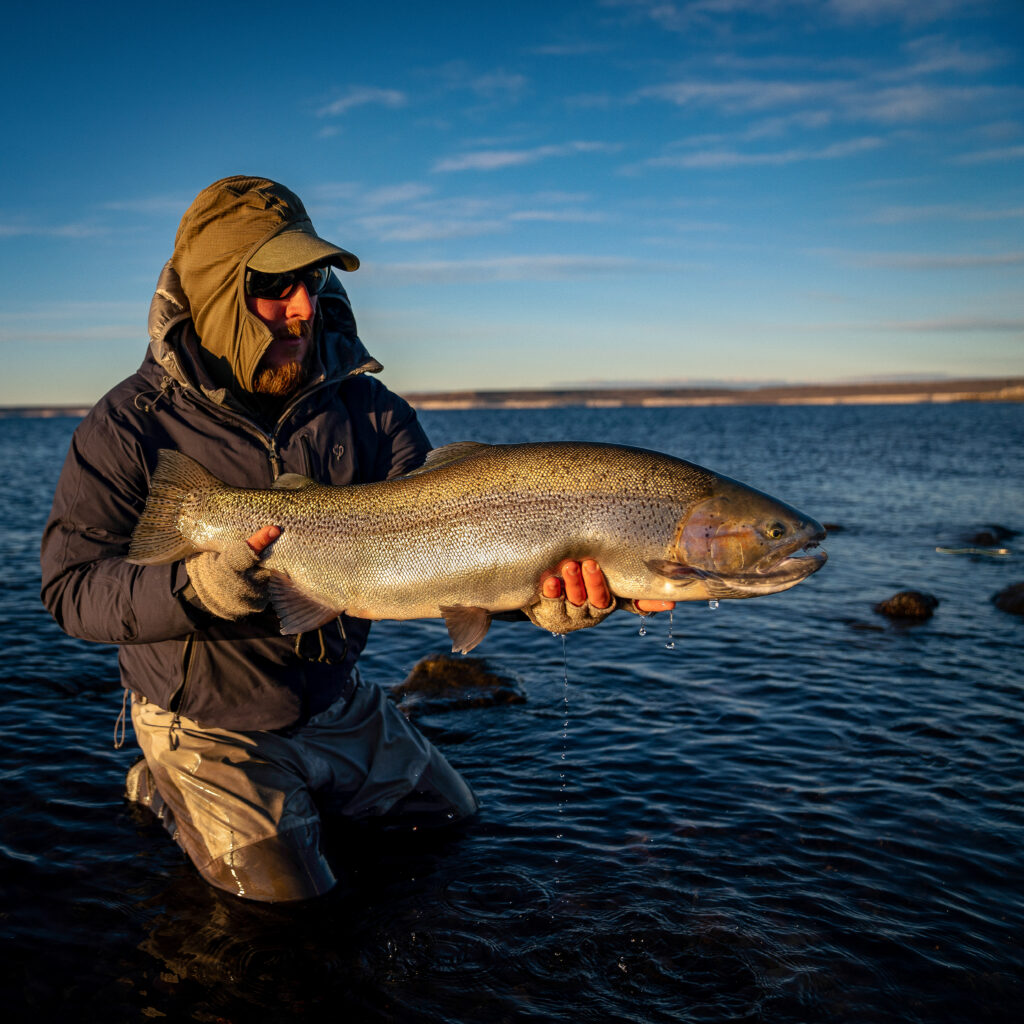
Ruined
“I watched my fly for several minutes before I noticed a torpedo-shaped silhouette gliding just under the surface. I gave the line a slight tug, trying to paint the picture of a beetle struggling on the water. A few seconds later, the trout carefully sipped the beetle off the surface.”
Throughout the morning, the frozen ground warmed in the sun. The wind was mysteriously absent. Witt waded out holding a porous rock he had plucked from the lake. I walked over in curiosity and watched as scuds poured from the crevices of the rock like ants from an anthill. This was the forage base that supported the entire fishery.
That afternoon we explored other areas of the lake with guide Julian Escalada. He drove us to places around the lake with names like Monster Bay, Silver Bay and the Bay of Pigs. We caught one large fish with a deformed jaw. Angler Chris Young made a great cast to lead the fish by a few feet. The trout made a single flick of its tail, munched the scud imitation, and Young set the hook.
With the lack of wind, Escalada suggested we return to the river mouth and try fishing with dry flies. Wading back into the lake, I tied on a small beetle imitation and cast it as far as I could into the still water. The cast felt odd, and I realized it was the first cast of the trip I had made over my dominant shoulder. As a lefthanded caster facing north with a strong west wind, I had been making backhand casts the entire trip. It felt good to get back to normal.
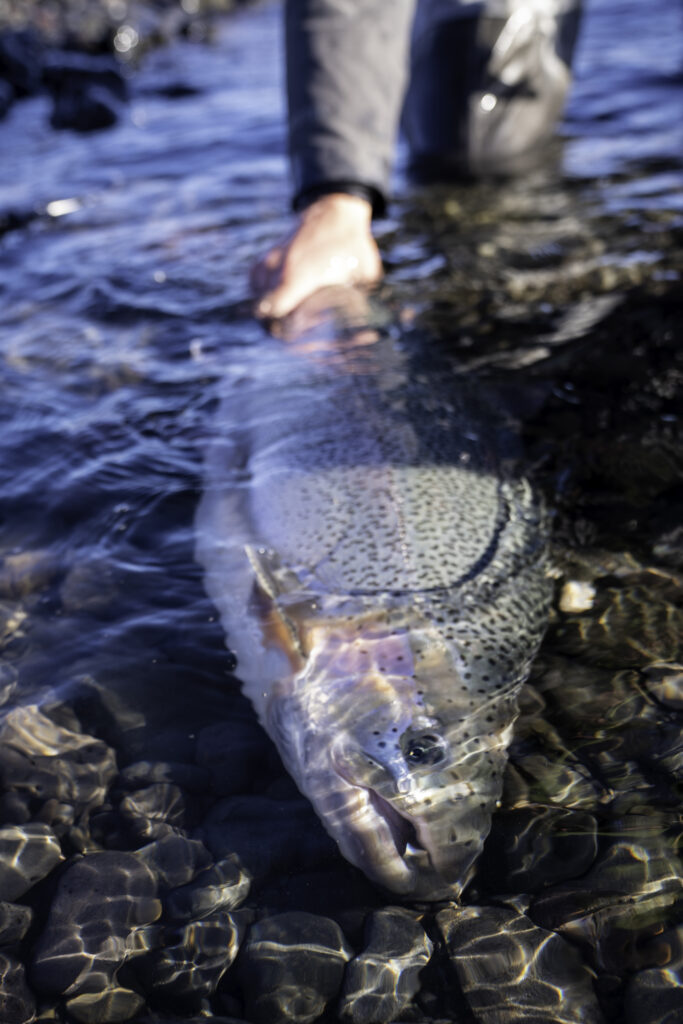
I let the fly settle on the water, popping it from time to time and sending tiny ripples across the surface. Lodge manager Lou Claven came down to fish, taking advantage of the rare lack of wind. He launched a graceful cast nearly 100 feet into the lake.
“Once the fly is on the water, it’s a waiting game,” Claven said as he stared at his fly in the distance.
I watched my fly for several minutes before I noticed a torpedo-shaped silhouette gliding just under the surface. I gave the line a slight tug, trying to paint the picture of a beetle struggling on the water. A few seconds later, the trout carefully sipped the beetle off the surface. I set the hook as quickly as I could, back peddling towards the beach to keep the line tight.
With the lighter tippet required for the dry fly, the fish peeled line from my reel until I was almost on my backing. When it jumped for the first time, I could tell it was a big fish, even by Jurassic standards, from over 100 feet away. Around 10 minutes later, I hoisted the largest rainbow trout of my life for a photo — a 33-inch fish with the girth of a football. I had caught it on a dry fly. Unbelievable.
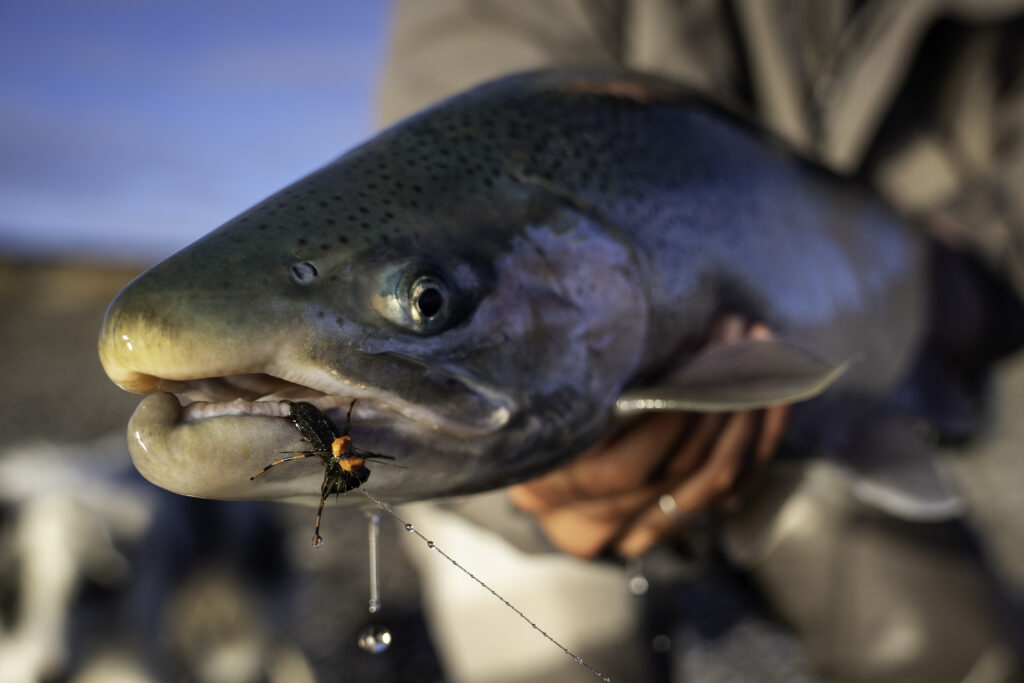
The crazy thing about Strobel is that every cast has the potential to connect with a 20-plus-pound fish. Opportunities like that are the reason anglers from all over the world are willing to travel to Jurassic Lake Lodge.
The other fisherman on the trip were veteran anglers. These were men who had traveled the globe extensively to fish. They unanimously agreed this was the best trout fishing on the planet. I also noticed that most of them were older. They had experienced this peak of fishing in their later year.
I wondered if it might have been better if I had been older to experience fishing like this. Once you have fished Jurassic you are ruined.
For more information about fishing with Hemispheres Unlimited at Jurassic Lake Lodge, contact Justin Witt at hemispheresunlimited.com

